Here's a history of Belleayre Mountain*:
During the 1800s, extensive logging in the Catskills and Adirondacks created siltation of the Hudson River watershed that threatened shipping downstream and in the New York harbor. In 1895, New York created constitutionally designated “forever wild” land in the mountains to protect shipping and the water supply for New York City. Belleayre Mountain in Delaware County was part of the preserve.
In 1929, a Newburgh man, Maltby Shipp, and his son gained local fame when they were the first to hike up and ski down Belleayre Mountain. In the following decade, more skiers came to Belleayre to hike and ski the 2,000 vertical feet of the mountain’s wooded trails.
Inspired by the excitement generated by the 1932 Winter Olympics in Lake Placid, the New York State Conservation Department began to develop ski trails to provide affordable recreation to New Yorkers and stimulate economic activity in rural communities. The federally-funded Civilian Conservation Corps was enlisted to develop seven ski trails, totaling 31 miles, in the Catskills. Among them was the “Belle Ayre Run” that allowed winter adventurers to ski the long run from the fire tower on the summit of Belle Ayre to the Village of Pine Hill.
In the years that followed, skiing grew in popularity across New York and in the Catskills. Hotels and ski clubs were built along trails on open slopes and through the woods. The first Catskill rope tow was built by the Civilian Conservation Corps near Phoenicia and attracted hundreds of skiers who came on ski trains from the city and areas downstate.
Skier visits dropped during World War II, but the late 1940s saw a resurgence in enthusiasm for the sport. The ski industry was propelled forward by returning World War II veterans of the 10th Mountain Division. Many of the cold-weather-trained soldiers had become avid skiers, and a number of them got involved in developing ski areas across the country. They included Arthur Draper, who, as a forest ranger with the Conservation Department, designed the first three slopes and other facilities at Belleayre. Draper was also instrumental in the creation of New York’s other state-owned ski areas Gore and Whiteface.
In November of 1945, business and civic leaders from the “Onteora Trail,” now the Route 28 corridor, formed the Central Catskills Association to push for transportation improvements and other means to promote the region. The CCA, headed by Robert B. Kehoe, was looking for a way to draw more winter visitors to this summer playground and became vocal backers of a proposal to create a state-owned ski center on the mountain. In addition, skiing enthusiasts pressured politicians to further develop Belleayre. A bill was drafted to allow the State of New York to create a ski area at Belleayre Mountain.
This required an amendment of the State Constitution to allow tree cutting and construction in the “Forever Wild” Forest Preserve. This was not without precedent. In 1941, the Constitution had been amended to create a ski area at Marble Mountain, the first ski area on the shoulder of Whiteface in the Adirondacks. Five years later, State Senator Arthur Wicks of Kingston became the legislative champion of a new amendment to allow the building of not more than 20 miles of ski trails at Belleayre, and not more than 30 miles of trails at Gore, South and Pete Gay Mountains in the Adirondacks.
The measure passed the state legislature in April of 1947. It was endorsed by Governor Thomas Dewey, New York City Mayor William O’Dwyer and Conservation Commissioner Perry Duryea. The New York State Chamber of Commerce spokesman Lowell Thomas said “both ski centers should offer in winter the same sort of inexpensive recreation that Jones Beach offers in the summer.”
Later that year, the people of New York approved by referendum a constitutional amendment creating an intensive-use ski center within this protected forever wild region. The Amendment passed statewide by a margin of over 618,000 votes, “more than double what its most ardent supporters had hoped.”
In 1949, New York began construction of Belleayre Ski Center. A crew of 135 men, led by Winthrop Howe, built three main trails, a summit lodge, a temporary base lodge with a crushed stone floor, a cafeteria, workshop, a mile of access road, and a 400-car parking lot. The $250,000 center had an electric rope tow and a Roebling single, the first chairlift in New York State.
On January 22, 1950, Lieutenant Governor Joe Hanley pressed a button to start the 3,000-foot-long lift, even though there was not enough snow to ski. Several hundred of the 1,500 spectators rode for free that day. Eventually snow fell and skiers paid $3.50 for a ticket to ski. 18 employees ran the mountain for 78 cents an hour. In February of the same year, the New York State Alpine Combined Championships were held jointly by Belleayre and neighboring Highmount Ski Center. Trains and buses brought hundreds of skiers to the new ski hub.
Belleayre was a popular attraction and became a center for winter sports in the region and an economic catalyst for surrounding communities. Skiers would pitch tents outside the lodge to be the first in line for tickets. As business increased, the mountain expanded, adding 12 new trails, three lifts, and a new base lodge in the 1950s. Major expansions were also made in the 60s and 70s, which brought the innovation of snow making technology. In 1977, Lift 6 (a Hall double chair) replaced the original Roebling double chairlift.
The 1980s saw improvements, refinements, and other expansion. Lifts 1 and 2 — side-by-side double chairs — were installed to service lower mountain beginner terrain. But only two trails had snowmaking and lodge facilities had become rundown. In the mid-80s, Belleayre was first faced with the prospect of closure. In 1984, Governor Cuomo submitted a budget that included $100,000 to mothball the ski area. The Coalition to Save Belleayre was created with Joe Kelly taking the lead as chairman.
The group began organizing. A petition to save the mountain with 13,000 signatures was presented to the governor. Newspapers including the New York Post published editorials in support of the ski area. Even leaders from Long Island — some of whom had never heard of Belleayre — began writing letters. Before year end, Governor Cuomo reversed his decision and earmarked funding for the ski area, which remained under the DEC.
The Coalition then drafted a plan addressing three important improvement areas: snowmaking, trail development, and marketing. From 1985 through 1993, $6 million was invested to upgrade machinery and equipment, helping to maintain the quality of the facility. Lift 7 was installed in 1986.
In 1987 another constitutional amendment allowed trail widening and other improvements at all three New York’s state run ski areas. Belleayre’s permitted mileage went from 20 to 25 miles of trails. One of the most important improvements took place in 1989 when Pine Hill Lake — which had been damaged when a dam broke after a big flood — was reopened for public use during the summer and tapped as a snowmaking reservoir during the winter.
In 1992, the Belleayre Beach was built, the Lower Lodge was expanded and a new lounge was added in the Overlook Lodge. In addition, the first Belleayre Conservatory Music Festival, was staged to bring people to the area during the off-season. That year, the mountain hosted the entire Brooklyn Philharmonic and they performed in the open air, which was a daunting proposition considering how quickly the weather can change and how much expensive equipment was on stage.
In 1999, Crossroad Ventures, headed by Dean Gitter of Mount Tremper, proposed the construction of Belleayre Resort at Catskill Park, on 1,906 acres adjacent to Belleayre and near two New York City reservoirs. In 2004, the DEC denied permits for Belleayre Resort at Catskill Park. Four years later, Governor Elliot Spitzer forged an agreement with Crossroad Ventures to scale back the development and to sell 1,200 adjacent acres to the state.
In the same year, the SuperChief (a Garaventa/CTEC fixed grip quad) replaced the Hall summit double. The lift connected the upper and lower mountains with loading below the Overlook Lodge. In 2006, the Superchief fixed grip quad was upgraded to a high speed quad by Doppelmayr/CTEC. Many of the lift towers were reused, but the midstation was eliminated. Remaining parts were sold to Catamount.
In 2011, economic contraction and budget issues resulted in the formation of the Governor’s Spending and Government Efficiency Commission (SAGE). SAGE recommended that Belleayre be managed by ORDA the Olympic Region Development Authority. In 2012, Gov. Andrew Cuomo endorsed SAGE’s recommendation and the 2012-2013 ski season was Belleayre’s first under ORDA which also operates Gore and Whiteface Mountain ski resorts.
A peek through history:
Belleayre Ski Patrol and Ambulance - 1952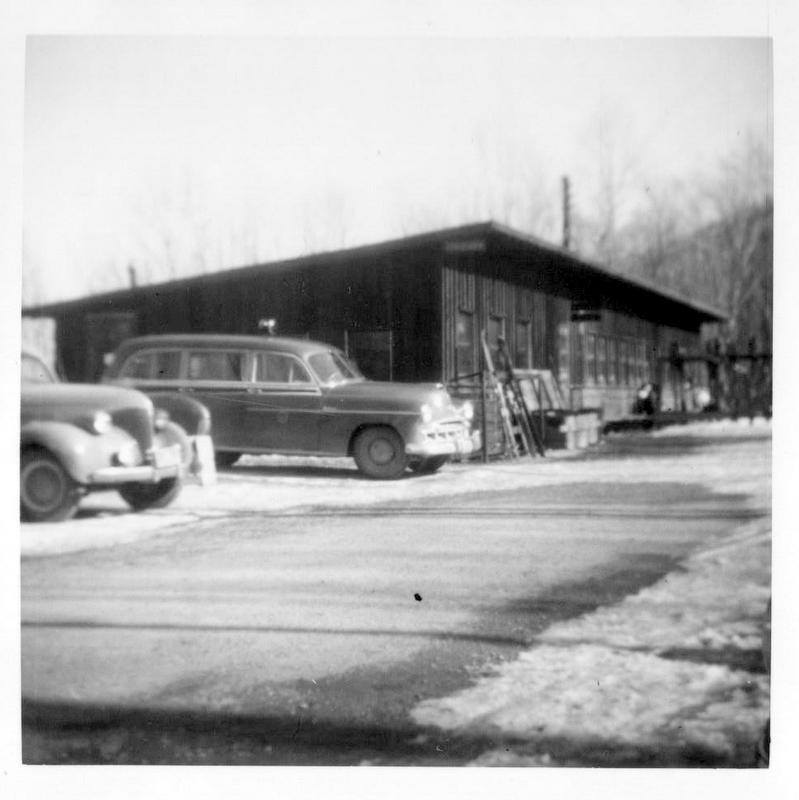
Early Belleayre Lodge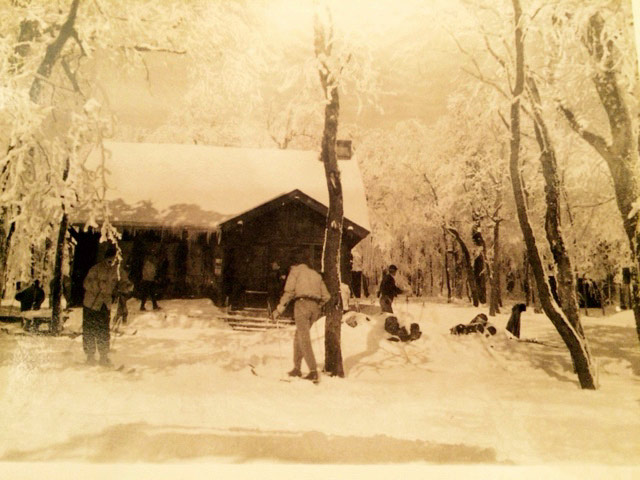
Belleayre Chairlift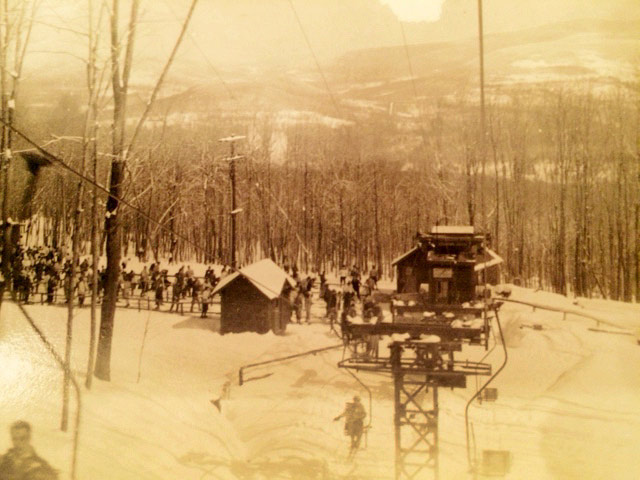
Ski School Lessons - 1950s
Snow Packer - 1953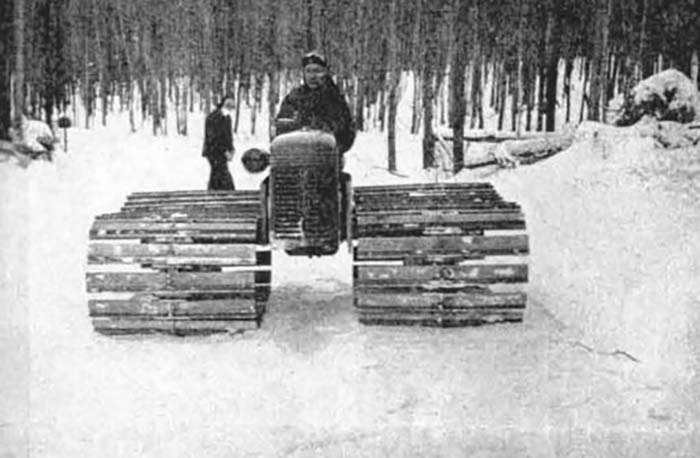
Belleayre Chairlift
Belleayre Chairlift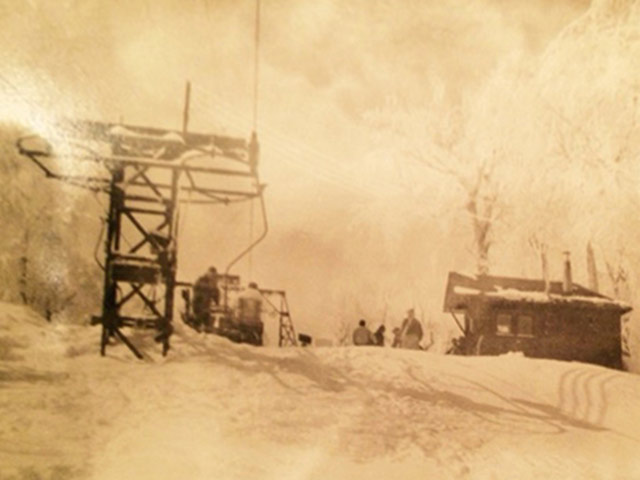
Belleayre Chairlift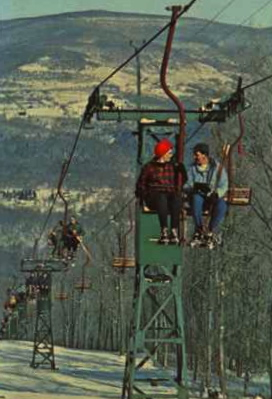
Belleayre Surface Lift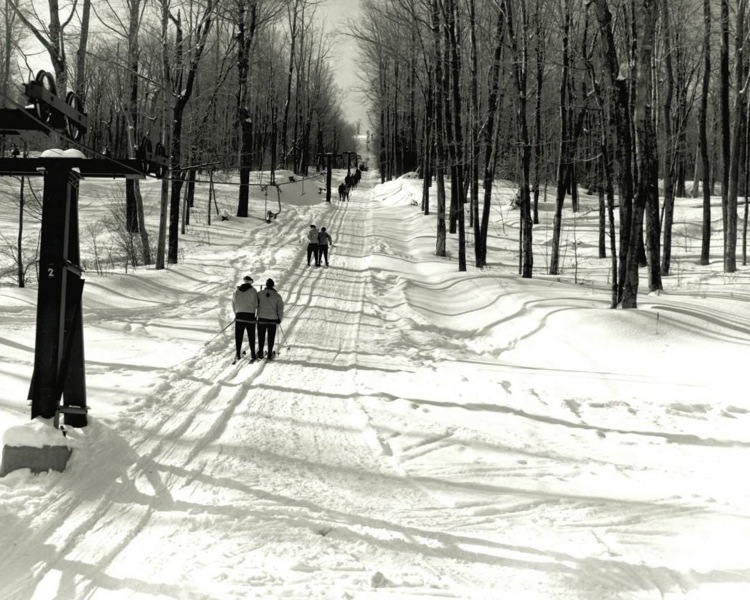
New Yorks First Chairlift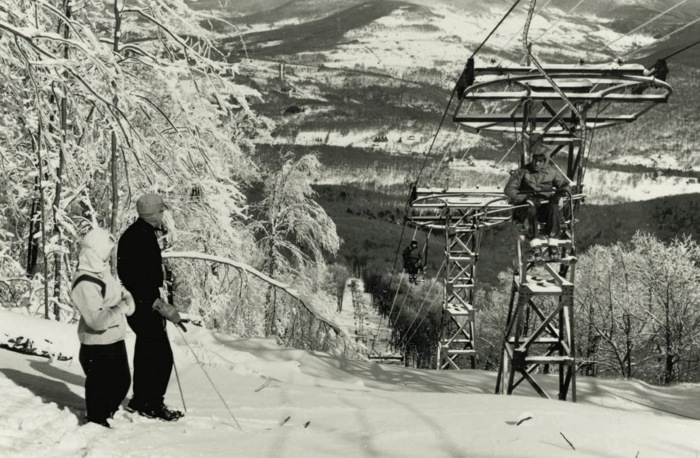
1955 news article: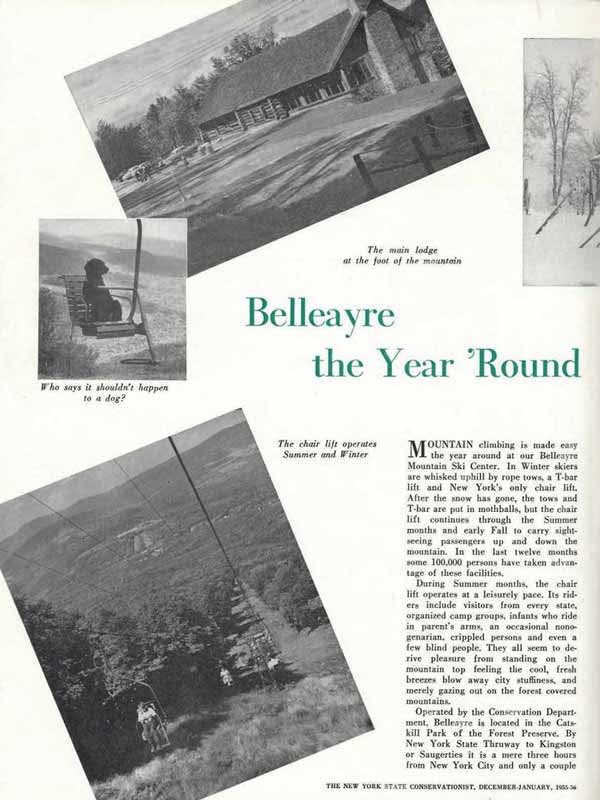
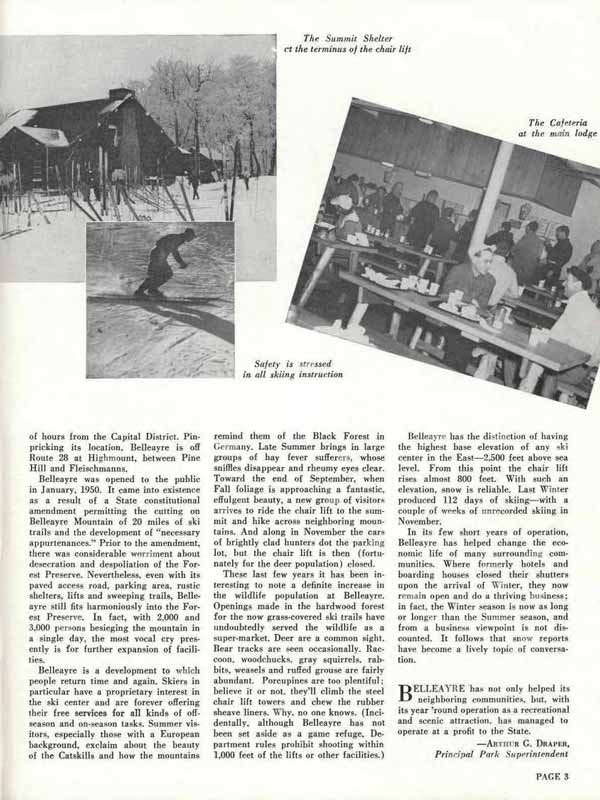
Belleayre Mountain Chairlift
Belleayre Mountain Logo from 1950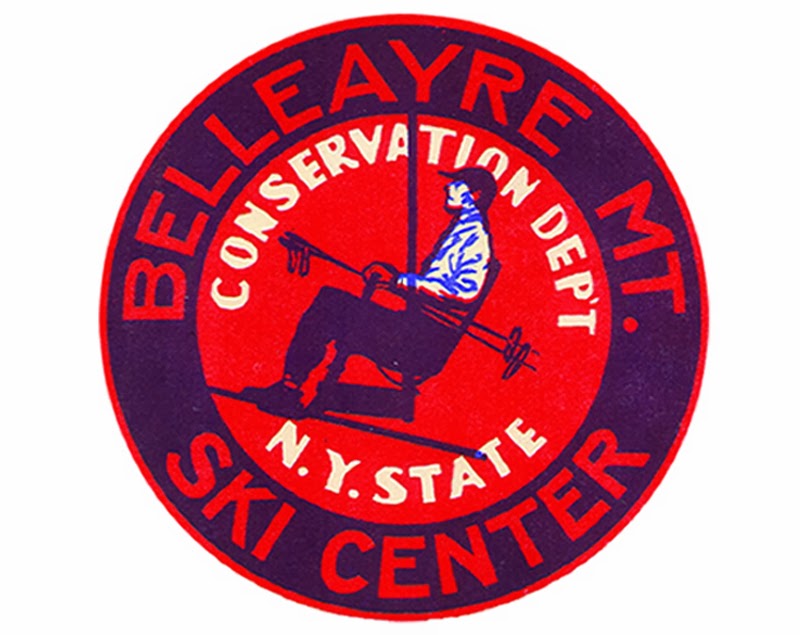
More Belleayre Mountain Historic Articles